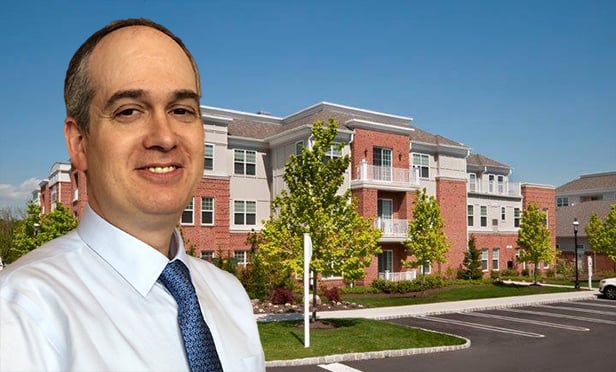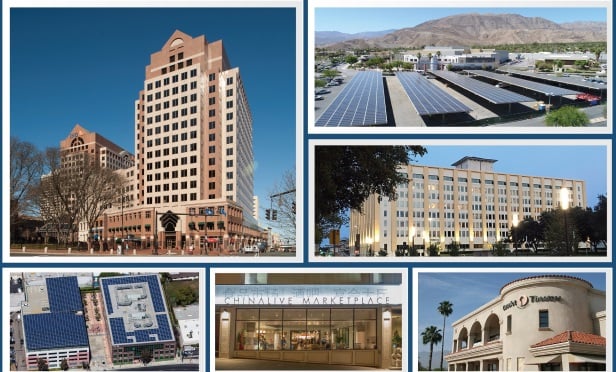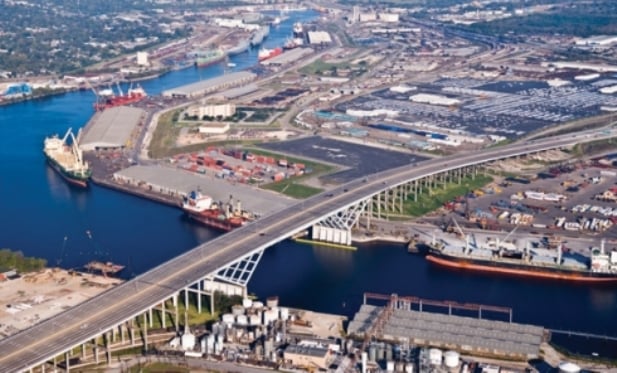LA Better Buildings Challenge: Far Exceeding ItsOriginal Project Goals The Los Angeles Better Buildings Challenge (LABBC) hasbeen overwhelmingly successful over its first 2 years and is set toeasily surpass its original long term goal: to achieve 20% energysavings across 30 million square feet of existing commercialbuildings in Los Angeles by 2020. So now the LABBC isstepping it up a notch and is looking to surpass the program goalbefore the end of 2013. The Better Buildings Challenge The LABCC was launched by Mayor Antonio Villaraigosa and theCity of Los Angeles in 2011, and consists of an extensive range ofprograms that aim to reduce energy consumption in existingbuildings - from retrofitting City-owned facilities andaffordable housing stock, to working with the private sector tosupport financing of energy and water efficiencyupgrades in commercial buildings. The programs bring togetherpartners from the business, utility, government, real estate,finance, and not-for-profit sectors to promote, simplify, andfinance energy efficiency retrofits in commercial properties. This network of partners helps building owners and operatorswith a wide range of services, from originally benchmarking the building, to performingassessments, finding utility rebates, to financing or managing theimplementation process. “The City of LA is committed to reducing City-wide GHGemissions and to helping our businesses and residents reduce theirelectricity and water consumption” explains Varun Sivaram, SeniorEnergy Efficiency Advisor to Mayor Villaraigosa. “Technologyhas a big role to play in that, and it's important to keep abreastof the latest developments.” The LABCC is part of a broader, national initiative: TheBetter Buildings Challenge that is sponsored by the White House andthe US Department of Energy. The initiative calls on publicand private sector building owners to accelerate the modernizationof existing buildings and to share the performance data, thusattracting more capital to the energy efficiency space whilesignificantly reducing operating costs for participatingbuildings. LABBC in Action Since 2011, the City of Los Angeles has initiated over 50projects totaling over 1M square feet with an investment of $16M,and the City's Housing Department has extended loans to fundefficiency retrofits of 10 affordable housing projects totalingover 650,000 square feet with over $4.5M in investment. During this time, the LA Commercial Building PerformancePartnership also initiated energy audits encompassing over 35million square feet of commercial space - from small neighborhoodretailers to car dealerships, hospitals and downtown skyscrapers -and has developed a directory of capital providers to facilitateaccess to project funding options, with the goal of driving atleast $25 million in total investment during their partnership inthe Better Buildings Challenge. From these energy audits,over 75 buildings representing over 11 million square feet havebecome part of the LABBC, and property owners and partners arecontinuing to join every week. Some of the notable property owners and managers include theCity of Los Angeles, Kilroy Realty, CBRE, Children's Hospital ofLA, and Morlin Management. To date, the audits have resultedin over $12.5 million in construction retrofits corresponding toover $2.5 million in annual energy cost savings. The value of energy reductionPartner Energy recently had the opportunity tosit down with David Hodgins, Executive Director of the LABBC. Mr. Hodgins spoke of the success of the program and theopportunity for the energy efficiency of commercial buildings tohelp drive economic growth and greenhouse-gas reduction in theUnited States. But, he also discussed the challenges of theprogram and detailed the barriers that are hindering the widespreadimplementation of energy efficiency retrofit projects. Mr. Hodgins suggested that LA has broken the ice on beginninginvestments in the energy efficiency arena. ”We really haveonly just dipped our toes into the vast economic opportunity thatenergy efficiency represents” he said. A recent study by McKinsey shows that with $520 billionupfront investment, the US economy could reduce non-transportationenergy consumption by 23 percent by 2020, which would eliminatemore than $1.2 trillion in waste. Such a reduction in energyconsumption would not only reduce greenhouse-gas emissions by 1.1gigatons – the equivalent of taking all US passenger vehicles andlight trucks off the road! – but would also help the US reduce itsdependency on foreign oil. Another study, performed by Deutsche Bank and TheRockefeller Foundation concluded that $279 billion could beinvested in energy efficiency retrofits for the residential,commercial, and institutional sectors that would result in $1trillion in energy savings over 10 years – representing over 30percent of the annual electricity used in the US. It alsodetermined that this would result in the creation of over 3.3million jobs. Additional studies have also shown thatgreen buildings see a 7 percent increase inbuilding value, a greater than 9 percent increase in return oninvestment (ROI), a jump in productivity and tenants reportingfewer sick days. Putting the theory into practiceSo why isn't this being implemented faster and morewidespread? Mr. Hodgins explained that “There are a number ofpersistent market barriers that have impeded a faster markettransition towards higher energy efficiency.” He felt thatinitially, some owners were skeptical because there is no publiclyavailable data on verifiable project performance, and only recentlyhas there been a clear industry standard for how to collect,analyze, or present data on energy efficiency opportunities, or howto track the resulting savings. Owners and their financial decision makers rely on third-partystandard reports to make investment decisions, and without industrystandards implementing energy efficiency projects was seen as“risky”- even if in most cases the technologies and savings wereproven. Energy efficiency retrofits are in competition for a limitedsupply of capital with other real estate investment opportunities,many of which don't actually have a higher return but are more“familiar” and deemed less risky. Often, this results inowners waiting until an emergency occurs to replace aging,inefficient equipment - missing opportunities to bundle projectstogether to maximize efficiency and ROI. It also leads to higherbuilding maintenance and energy costs. Mr Hodgins discussed another challenge: bridging the languagegap between property managers, buildings engineers and those thatsign off on energy efficiency projects – asset managers and CFOs. The building engineer may have a great energy efficiencyproject that will save money and is a great investment, but lackthe aptitude in financial analysis to build a case and present itto management. This can often be the case even with outsidethird party consultants. Real estate language and engineeringlanguage are quite different – and the engineering solution mightnot be the right real estate solution. Often the energy efficiency firms with backgrounds in bothreal estate and engineering are the most successful ones becausethey are able to bridge the gap, and speak both “engineering” and“real estate.” Moving forward – the next phase ofLABBCToday “green” is slowly moving from “risky” to “mainstream”. There have been advancements in industry standards to allowfor predictable, trustable underwriting for energy efficiencyprojects, as well as past implementation projects that show successand verifiable results. Also, financing vehicles that solelyinvest in energy efficiency projects are beginning to appear. As head of the LA Better Building Challenge, Mr Hodgins isworking with the City of Los Angeles to help bridge any market gapswith education and information to continue to successfully push andimplement its energy efficiency strategy. Last week, theLABBC held its first Building TechnologyShowcase which drew over 200 attendees to see fast-pitchpresentations from over 40 leading technology companies – many ofwhom have agreed to offer discounted pricing to LABBCPartners. David Jacot, Director of Energy Efficiency for the LADWPpraised LABBC's efforts to educate building owners, operators anddevelopers. “Technology is advancing so rapidly, it can bedifficult to keep up. The Building Technology showcase was agreat way for customers to quickly get up to speed on the latestdevelopments in efficient building technologies.” Reaching the original LABBC program goal of a 20 % energyreduction across 30 million sf – which Mr. Hodgins expects willoccur even before the end of the year - equates to averting theemissions of over 18,000 cars in addition to creating over 7000high quality local jobs. With its overwhelming success, the LABCC is now targeting muchbigger numbers. As the program is being rolled out for2014-2015, it will consider not only funding additional energyaudits, but funding to help additional soft costs such asspecification development, bid development and review, constructionoversight, quality assurance and verification of installedmeasures. Progressing the innovation of energy efficiencytechnologies and retrofits not only produces ongoing economicproductivity gains, but will also help transform LA into one of thegreenest, most economically-competitive big cities in America. LA is leading the pack as a number of other cities arekeeping a close eye on this model, and have plans to create similarprograms in the future.
Continue Reading for Free
Register and gain access to:
- Breaking commercial real estate news and analysis, on-site and via our newsletters and custom alerts
- Educational webcasts, white papers, and ebooks from industry thought leaders
- Critical coverage of the property casualty insurance and financial advisory markets on our other ALM sites, PropertyCasualty360 and ThinkAdvisor
*May exclude premium content
Already have an account?
Sign In Now
© 2024 ALM Global, LLC, All Rights Reserved. Request academic re-use from www.copyright.com. All other uses, submit a request to [email protected]. For more information visit Asset & Logo Licensing.








